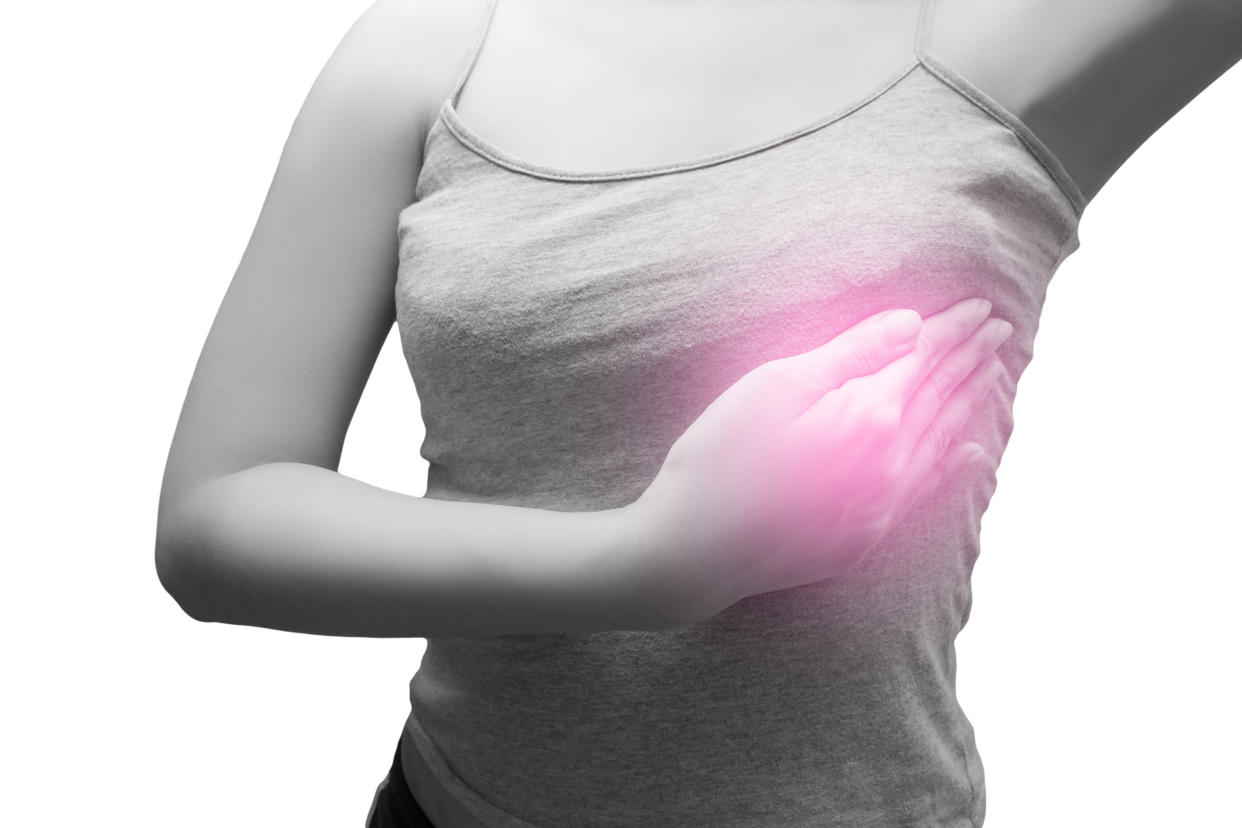As many as 190 genes may be behind breast cancer

As many as 190 genes - and more than 350 genetic mutations - may trigger breast cancer, research suggests.
After reviewing data collected by over 450 institutions worldwide, a team of scientists claim it provides the most detailed picture yet of how a woman’s DNA puts her at risk of the disease.
READ MORE: HRT may cause - or prevent - breast cancer depending on the hormones involved
The experts compared the genes of 110,000 breast-cancer patients with those of 90,000 healthy individuals.
This revealed 352 “risk variants” and 191 genes the scientists can say with “reasonable confidence” cause breast cancer.
Less than one in five of these genes had previously been identified.
One in eight women in the UK and US will develop breast cancer at some point in their lives, statistics show.
“We know from previous studies variants across our DNA contribute towards breast cancer risk, but only rarely have scientists have been able to identify exactly which genes are involved,” study author Dr Laura Fachal, from the Wellcome Sanger Institute, said.
“We need this information as it gives us a better clue to what is driving the disease and hence how we might treat or even prevent it.”
READ MORE: News reader Kristen Dahlgren reveals she was diagnosed with breast cancer
Each human is made up of between 20,000 and 25,000 genes, many of which code for proteins.
Variants can arise within genes, altering the protein. Most variants, however, are outside genes. These regulate protein function, turning its “volume” up, down or even off.
Finding the gene targeted by these variants is not straightforward, particularly with breast cancer. The complex disease has no single DNA variant or gene behind it.
Instead, a combination of genes are thought to act together to increase the risk an individual will develop the disease.
“This incredible haul of newly-discovered breast cancer genes provides us with many more genes to work on, most of which have not been studied before,” study author Dr Alison Dunning, from the University of Cambridge, said.
“It will help us build up a much more detailed picture of how breast cancer arises and develops.
“But the sheer number of genes now known to play a role emphasises how complex the disease is.”
Of the newly-discovered genetic variants, one third were found to predispose women to hormone-responsive breast cancer.
This occurs when oestrogen and progesterone promote the growth of malignant tumours in the breast.
Responsible for four out of five breast-cancer cases, it typically responds well to hormonal treatments, like tamoxifen.
READ MORE: Jennifer Garner gets the all-clear after a mammogram
Results, published in the journal Nature Genetics, also show 15% of the genetic variants discovered predispose women to the rarer oestrogen-receptor-negative breast cancer.
This occurs when breast tumours lack receptors for oestrogen.
The remaining genetic variants were found to play a role in both types of breast cancer.
In most cases, the genetic change seemed to effect DNA expression, i.e. how active a particular gene was and how much of a protein it created.
For instance, nine different variants were found to regulate the same section of DNA - the Estrogen Receptor (ESR1) gene.
Many other variants affect genetic areas where the Estrogen Receptor protein binds and, in turn, regulates other genes.
This highlights the importance of the ESR1 gene and its protein product - the Estrogen Receptor - in breast cancer development, the scientists claim.
While each genetic variant only increased the risk of breast cancer by a very small amount, the scientists claim when the findings are combined, it will allow them to “fine tune” genetic testing and give women a clearer picture of their risk.
This will then enable doctors to give advice on the best strategy for a woman to prevent the onset of the disease.

 Yahoo Lifestyle
Yahoo Lifestyle 
